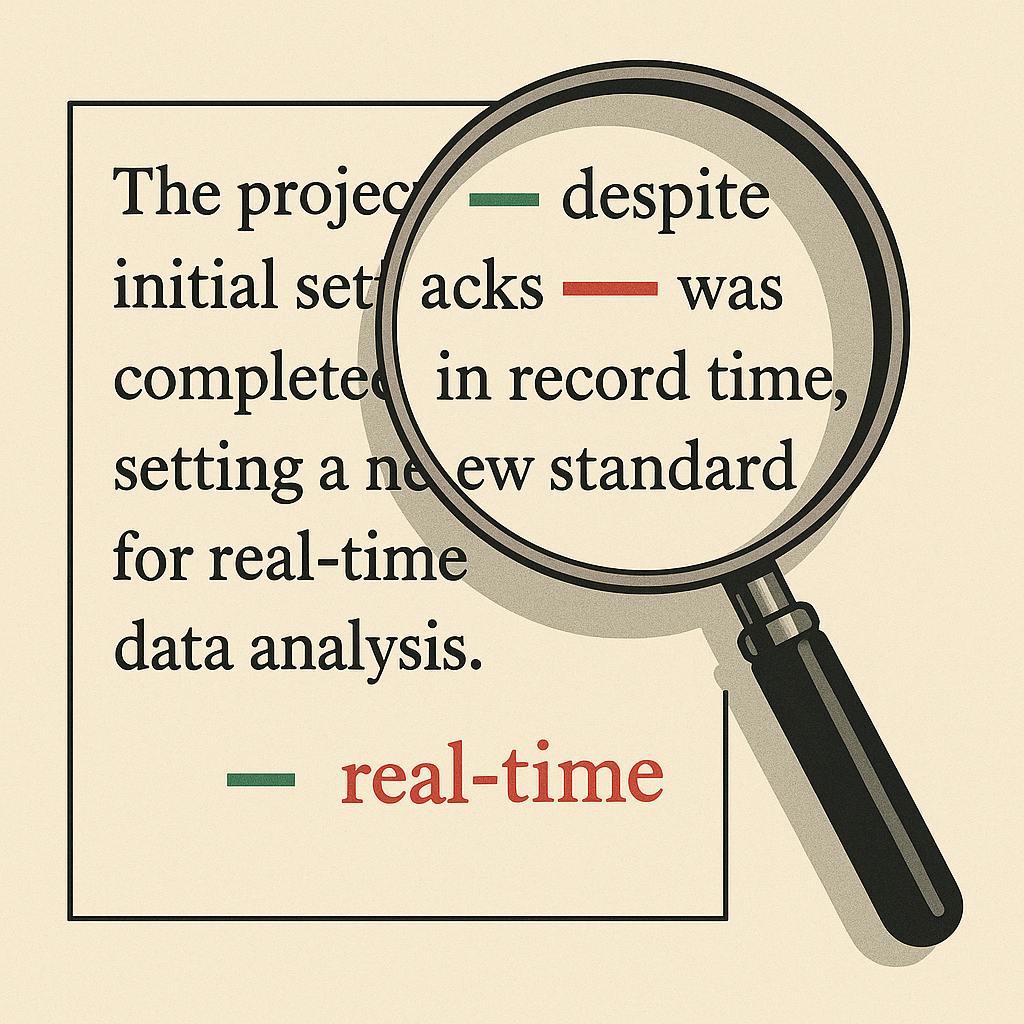There is a secret tell that gives away many AI generated texts. It is not in the ideas. It is not in the grammar. It is in the punctuation.
Most people cannot correctly use the different horizontal marks on their keyboard. The humble hyphen, the en dash, and the em dash each have a specific purpose. The em dash is long and dramatic — like this. The en dash is a little shorter – like this. The hyphen is the shortest of the three and connects words like real-time or well-being.
Ask a random person which keyboard shortcut creates an en dash and you will mostly get blank stares. Most humans do not care. They either use only the hyphen key or they let their word processor auto correct without noticing. AI systems on the other hand were trained on cleanly formatted writing, style guides, and large amounts of edited text. They know the difference and use all three correctly and with confidence.
How an AI text gives itself away
Here is a typical AI generated sentence:
"The project — despite initial setbacks – was completed in record time, setting a new standard for real-time data analysis."
Notice how it perfectly alternates between em dash, en dash, and hyphen, all in the right places. This is style guide perfection. It is also not how most humans write in casual or even professional settings.
How a human would write the same thing
"The project, despite initial setbacks, was completed in record time, setting a new standard for realtime data analysis."
The dashes are gone. The hyphen in real-time is gone. Commas take over. This is how real people write when they are not thinking about typographic purity. They are focused on the message, not the punctuation taxonomy.
Why this works as a detection trick
Stylometry experts look for patterns in writing to detect authorship. AI detection tools often fail because large language models can mimic sentence length, vocabulary, and tone. But punctuation is harder to fake in reverse. You can tell an AI to use bad grammar, but its built in habit of precise punctuation is harder to break.
If you want to play detective, read an article and look at its horizontal marks. If you see a perfect mix of all dash types and every hyphen exactly where the Chicago Manual of Style says it should be, you might not be reading a human. If it looks a bit messy, it is more likely real.
The ultimate hack
You do not need expensive AI detection tools. You need a sharp eye and a basic understanding of typography. That one subtle line on your screen might tell you more about the author than the entire content of the paragraph.
Call it the dash test. Once you start noticing it, you will not be able to unsee it.


